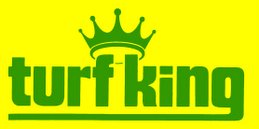Soil is more than "Dirt." All plants will grow better in good soil. So. . . what makes soil good. Different plants have different tolerances to soil conditions.
Lawns need a soil with good structure. This refers to the size and shape of the soil particles. Ideally about 50 percent of the soil should be soil solids. The rest of the soil is composed of the empty spaces. These are called pores spaces. Basically there are two type of pores. The small pores are important for storing water. These small pores contain the water and allow it to move in the soil through capillary action. The smaller the pores, the higher up (the greater distance) the water is able to move. Large pores are essential for drainage and aeration. These pores are too large to hold water (at least for very long). These spaces though, are important because they hold oxygen. Without the correct balance of water and air, the roots will not survive.
Clay soils are fine textured and have the largest amount of pore space. However, because the pores are small, they tend to hold less oxygen and can contain a lot of moisture. Sandy soils, on the other hand, have large pores, which limits the amount of water that the soil can hold.
The best soil will have a balance of fine textured silts and clays, with some coarser textured soil solids to allow water to drain away after a rain or irrigation.
If you have a lawn/tree/shrub that needs some Tender Loving Care- get The KING OF GREEN:
Tuesday, February 20, 2007
Soil or Dirt
Sunday, February 11, 2007
Do tree roots keep coming up for air?
Do tree roots keep coming up for air?
Thursday, February 8, 2007
Does all this snow hurt my lawn?
Friday, February 2, 2007
Too much salt may increase your blood pressure

Salt can be an interesting thing to look at in its crystalline form. It does a good job of melting snow and ice and thus keeping us safe on the roads and upright on our walks, steps and porches. Salt on the lawns however is not a good thing.
Excess salt will kill the lawn. This means that seeding must be done in the spring to fill the bare patches. (more work!!- always raises my blood pressure!!)
To reduce damage to the lawn- use an ice melting product that does not contain regular salt. Don't use more than is required. In areas where salt damage is prevalent, use gypsum in the fall and spring to help to neutralize the effects of salt. Apply at about 8 lbs per 100 square feet on clay soils. Sandy soils need about half as much.
Thursday, February 1, 2007
Grass types can reduce insect damage
What does "endophytic" mean for the lawn? Endophytic grasses reduce chinch bugs and other lawn pests. They contain materials that are either toxic to the insects or that cause the pests to avoid these plants. Perennial rye grasses have been developed to reduce the chances of insect damage. Never use endophytic lawn grasses in pasture areas as the endophytic grasses are harmful to horse and cattle. Our mix uses a "turf-type" perennial rye grass. This designation is to distinguish between fine textured varieties that are suitable for lawn use from those varieties that have coarse, unsightly leaf blades.
Mixes with Annual rye grass are generally not recommended. The annual rye grass is useful in some situations as it germinates rapidly. However, it is not long lived. Generally, turf-type perennial rye grasses will do the same job of germinating quickly and thus providing some cover and protection for the slower germinating grasses such as Kentucky bluegrass.
The King of Green is Cold
Winter has descended with a white blanket over the lawns in Hamilton and the cold is numbing at times.
The warm weather in December and January was unusual. I drove by a lawn in December after a few days of sunshine and saw a few dandelion plants with seed heads blooming. I swear I had driven by that way a few days earlier. Yet, I could not remember seeing any yellow flowers. I wondered if the dandelion seed heads had been sitting encased in their post-flower stage just waiting for some warm weather. If the weather hadn't been warm in December, would they have bided their time until the spring. Was this an effect of the "El Nino" winter that we are supposed to be getting? Will the dandelion puffs that dispersed their seeds in December result in more weeds or fewer weeds next spring.

